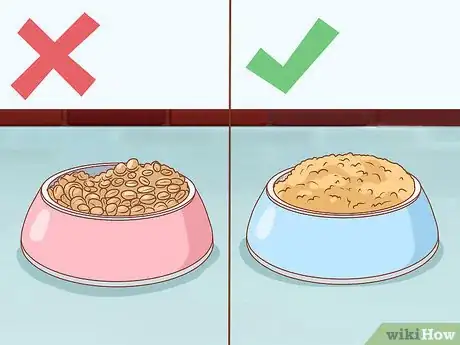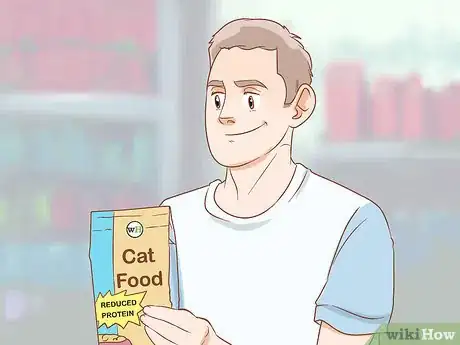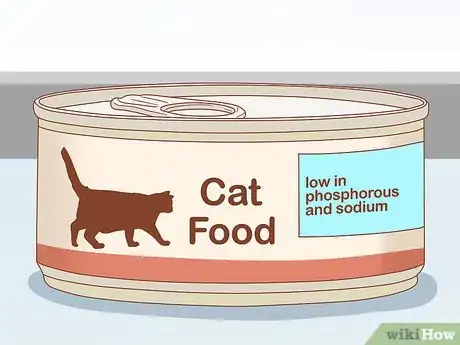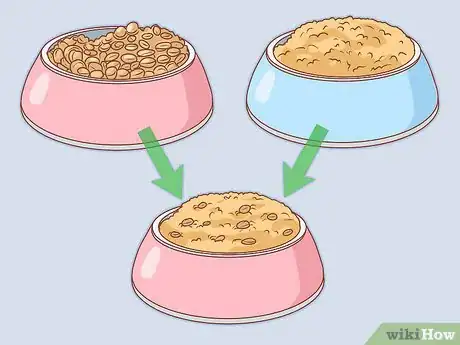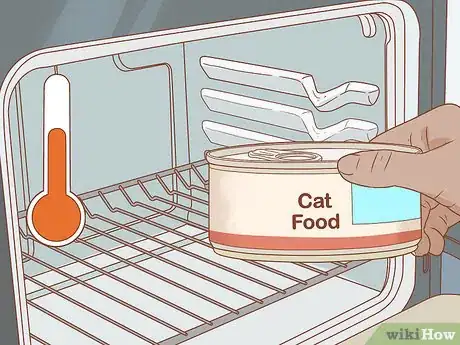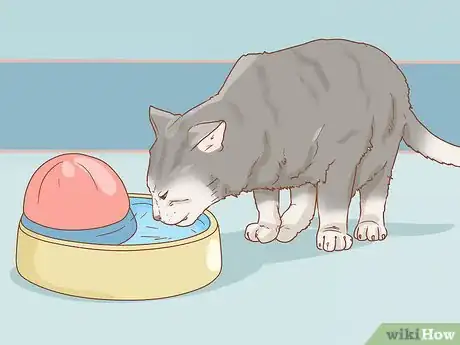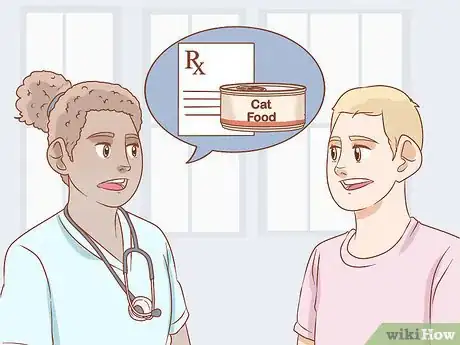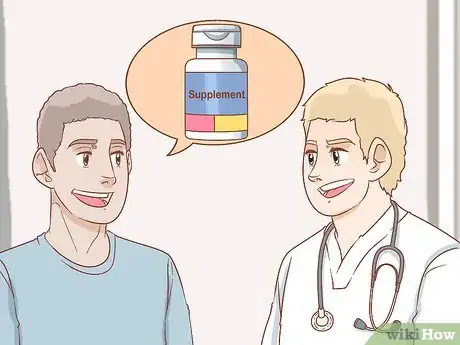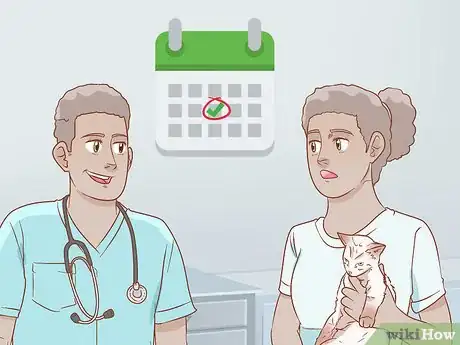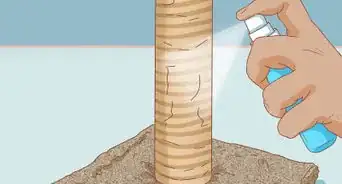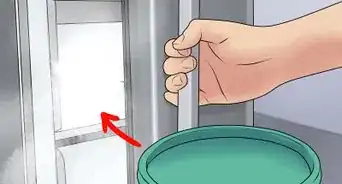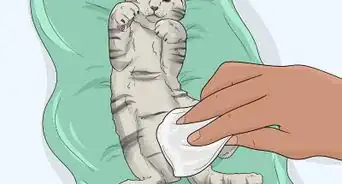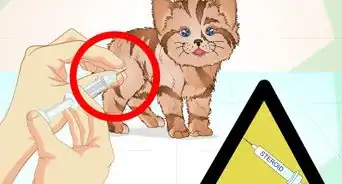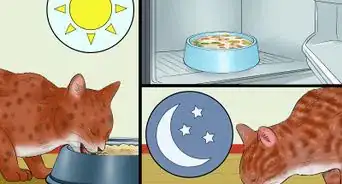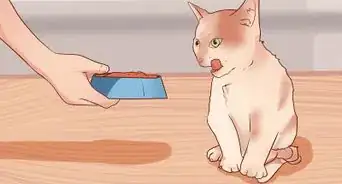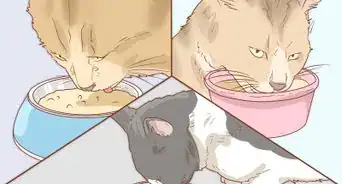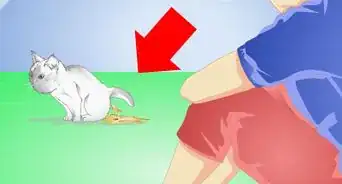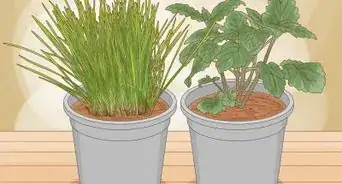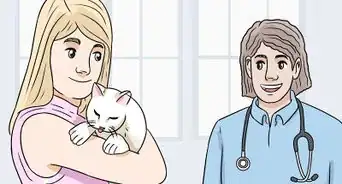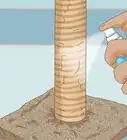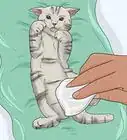This article was co-authored by Pippa Elliott, MRCVS. Dr. Elliott, BVMS, MRCVS is a veterinarian with over 30 years of experience in veterinary surgery and companion animal practice. She graduated from the University of Glasgow in 1987 with a degree in veterinary medicine and surgery. She has worked at the same animal clinic in her hometown for over 20 years.
wikiHow marks an article as reader-approved once it receives enough positive feedback. In this case, 92% of readers who voted found the article helpful, earning it our reader-approved status.
This article has been viewed 36,596 times.
Kidney issues tend to show up in older cats or cats who have other health issues like high blood pressure, a hereditary disease, or cancer. Cats with kidney problems like chronic kidney disease need to maintain a special diet to stay healthy and manage their symptoms.[1] You may struggle with feeding a cat who has kidney problems, as you do not want its condition to get worse. Start by selecting food that will help your cat’s kidneys improve and adjusting your cat’s diet. You can also consult with your vet for guidance and advice.
Steps
Selecting Food for Your Cat
-
1Give your cat wet food instead of dry food. Cats with kidney issues can become easily dehydrated, as their kidneys cannot retain water efficiently. They need to consume a lot of water on a regular basis to stay healthy. Giving your cat wet food will ensure it gets enough water when it eats. Dry food is too dehydrating and should be avoided.[2]
- Go for canned wet food that is high quality and all natural. Look for wet food that contains tuna juice, clam juice, chicken broth, and beef broth. Just make sure that these are low in sodium. Avoid tuna in brine and opt for tuna in water instead.
- You can also add water or warm broth to your cat’s wet food for added water consumption.
-
2Make sure the food contains reduced amounts of protein. A reduced protein diet is important for cats with kidney issues, as it can be hard on your cat’s kidneys to process a lot of protein at once. Give your cat wet food that contains less protein and protein that is high quality. High quality protein like rabbit and chicken are usually easier to digest for cats with kidney issues.[3]
- Look at the ingredients list on the food to make sure it contains lower protein content than regular cat food. Try to get your cat mostly wet food made with proteins like rabbit or chicken. Protein like beef and fish are also fine occasionally as protein sources for your cat. Just make sure to avoid any plant-based proteins since these are lower quality and will not provide the proper nutrients to a cat with renal disease.
Advertisement -
3Check that the food is low in phosphorous and sodium. Phosphorous can make kidney issues worse. Limit or restrict your cat’s intake of phosphorous so its kidney issues do not get worse. Look for food that is advertised as low in phosphorous for your cat.[4]
- Low sodium is also important for the maintenance of your cat’s kidneys, especially if it has kidney issues. Go for cat food that is advertised as low sodium.
-
4Ask your vet for food recommendations. Your vet should be able to recommend several food brands that make cat food for cats with kidney issues. These foods are usually low in protein, phosphorous and sodium. They will be made with cats with kidney problems in mind.[5]
Adjusting and Maintaining Your Cat’s Diet
-
1Change your cat’s diet gradually. Cats can find it difficult to switch their diet, especially to a diet that may not taste like their usual food. Start by changing your cat’s diet gradually over a few weeks. Mix in a small amount of the new food with your cat’s old food. Increase the amount of new food in the old food slowly over a period of weeks, adding more each day. Only give your cat more new food in its old food when it eats all of the mixture.[6]
- Be patient and do not try to rush your cat into eating the new food right away. Doing this can make your cat not want to eat at all, which is very bad for its health.
-
2Warm up the food. Bringing the cat food to a warm temperature, around 30 degrees Celsius (86 degrees Fahrenheit), can make it more enticing to your cat. Present the wet food warm in your cat’s bowl so it is encouraged to eat it.[7]
-
3Maintain a regular feeding schedule. Feed your cat at the same time every day, twice a day. Doing this will help your cat regulate its appetite and make it easier for it to adjust to a new diet. Try not to deviate from the feeding schedule for your cat once it is established.[8]
- This is especially important when you are giving your cat wet food, as wet food should not sit out for a long time. Give it to your cat at the same time every day and make sure your cat eats all of it. Throw away any remaining food in its bowl when it is done eating.
-
4Make sure your cat has access to fresh water. Cats with kidney problems are susceptible to dehydration and should have access to fresh water at all times. Keep your cat’s water bowl full with fresh water. Put out multiple water bowls in your home so your cat has access to fresh water.[9]
- You can also put out flavored waters, like chicken or tuna water, for your cat to encourage it to drink.
Consulting with Your Vet
-
1Ask your vet for prescription cat food. If your cat has serious kidney problems, such as chronic kidney disease, your vet may prescribe special cat food that you can give your pet. This prescription cat food will be specially formulated to help manage your cat’s symptoms and condition.[10]
- Your vet should also instruct you on how often you should feed your cat the prescription cat food. Follow your vet’s instructions when feeding your cat so your cat’s condition improves.
-
2Discuss other supplements for your cat. Depending your cat’s needs, your vet may recommend supplements for your cat to help manage its condition. Only give your cat supplements on your vet’s recommendations. Look for supplements that are pet safe and approved by your vet.[11]
- If your cat has high phosphate levels in its blood due to kidney issues, for example, your vet may recommend a phosphate binder that you can add to its diet.
- If your cat has low potassium levels due to kidney issues, your vet may suggest a potassium supplement for your cat.
-
3Bring your cat in for regular checkups. This will allow your vet to monitor your cat’s condition. Your vet may ask you to bring in your cat once you start it on its new diet to ensure it is adjusting well and doing better. Scheduling regular checkups can also help to prevent other major kidney issues from developing in your cat.[12]
References
- ↑ http://pets.webmd.com/cats/guide/cat-kidney-disease#1
- ↑ http://consciouscat.net/2016/02/15/the-right-diet-for-cats-with-kidney-disease/
- ↑ https://www.medicanimal.com/The-truth-about-renal-diets-for-cats/a/ART111494
- ↑ https://www.vetmed.wsu.edu/outreach/Pet-Health-Topics/categories/diseases/chronic-kidney-disease-and-failure
- ↑ http://pets.webmd.com/cats/guide/cat-kidney-disease#2-7
- ↑ https://icatcare.org/advice/cat-health/chronic-kidney-disease-cats-%E2%80%93-management
- ↑ https://icatcare.org/advice/cat-health/chronic-kidney-disease-cats-%E2%80%93-management
- ↑ https://www.medicanimal.com/The-truth-about-renal-diets-for-cats/a/ART111494
- ↑ https://icatcare.org/advice/cat-health/chronic-kidney-disease-cats-%E2%80%93-management
About This Article
To feed a cat with kidney problems, give it wet food instead of dry food, since cats with weak kidneys struggle to stay hydrated. You should also use food with low levels of protein, which is easier for the kidneys to process. Additionally, try to stick to foods with low levels of phosphorous, since too much phosphorous can worsen kidney problems. Make sure to change your cat’s diet gradually over a few weeks so it can get used to the new food. If your cat is having difficulty eating, warm up its food to around 80 degrees Fahrenheit to make it more enticing. For tips from our Veterinary co-author on how to add supplements to your cat's diet, read on!
